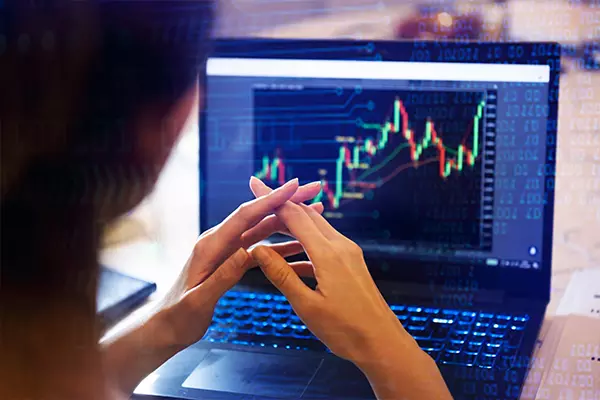Trading trends are shaped by a variety of factors, including technological advancements, market dynamics, regulatory changes, and shifts in investor behavior. As markets evolve, traders adapt their strategies to capitalize on new opportunities and mitigate emerging risks. Here are some of the key trends currently influencing the world of trading:
Algorithmic and High-Frequency Trading (HFT)
One of the most significant trends in trading over the past decade has been the rise of algorithmic trading and high-frequency trading (HFT). These strategies involve the use of complex algorithms to execute trades at speeds and frequencies that are impossible for human traders to achieve. Algorithmic trading allows for the rapid analysis of market data and the execution of trades based on pre-set criteria. HFT takes this a step further, executing thousands or even millions of trades per second. The speed and efficiency of these trading methods have made them dominant in modern markets, though they have also attracted scrutiny for their potential to increase market volatility.
The Rise of Retail Trading
The democratization of trading platforms has led to a significant increase in retail trading. Platforms like Robinhood, E*TRADE, and others have made it easier for individual investors to participate in the markets with low fees and user-friendly interfaces. This trend was particularly evident during the COVID-19 pandemic when retail investors played a major role in driving market activity. The “meme stock” phenomenon, where retail traders on platforms like Reddit’s WallStreetBets coordinated to drive up the prices of stocks like GameStop and AMC, highlighted the power of this new wave of traders. This shift has prompted changes in how institutional investors approach the market, as they now have to consider the impact of retail sentiment on stock prices.
Cryptocurrency Trading
Cryptocurrency trading has evolved from a niche market to a mainstream financial activity. Bitcoin, Ethereum, and other digital assets have gained widespread acceptance, and the market capitalization of cryptocurrencies has surged. The introduction of cryptocurrency derivatives, such as futures and options, has further fueled trading activity in this space. Additionally, the rise of decentralized finance (DeFi) platforms has opened up new avenues for trading, with users able to trade assets directly on blockchain networks without the need for traditional intermediaries. The volatility and 24/7 nature of cryptocurrency markets make them attractive to traders, but also pose significant risks.
Environmental, Social, and Governance (ESG) Investing
Another important trend is the growing focus on Environmental, Social, and Governance (ESG) factors in trading. Investors are increasingly considering the impact of their investments on the environment and society, leading to a surge in demand for ESG-compliant assets. This trend has been driven by both institutional and retail investors who are concerned about issues such as climate change, corporate governance, and social responsibility. As a result, companies with strong ESG credentials are often rewarded with higher valuations, while those that lag in these areas may face divestment or increased scrutiny.
The Integration of Artificial Intelligence (AI) and Machine Learning
Artificial Intelligence (AI) and machine learning are transforming trading strategies. These technologies enable traders to analyze vast amounts of data and identify patterns that would be impossible to detect manually. AI-driven trading systems can adapt to changing market conditions in real-time, optimizing trading strategies for maximum profitability. Machine learning models are also being used to improve risk management, with algorithms capable of predicting potential losses and adjusting portfolios accordingly. As AI and machine learning technologies continue to advance, their role in trading is expected to grow even more significant.
Regulatory Changes and Compliance
The regulatory landscape is continuously evolving, and traders must stay informed of changes that could impact their strategies. Recent years have seen increased scrutiny of financial markets, with regulators introducing new rules to enhance transparency and protect investors. For example, the European Union’s Markets in Financial Instruments Directive II (MiFID II) has imposed stricter requirements on trading firms, including more rigorous reporting standards and best execution obligations. Compliance with these regulations is essential for market participants, and failure to do so can result in significant fines and reputational damage.
The Popularity of Thematic Investing
Thematic investing is gaining popularity as investors seek to capitalize on long-term trends and structural shifts in the economy. This approach involves targeting specific themes, such as technological innovation, renewable energy, or the aging population, and investing in companies that are positioned to benefit from these trends. Thematic investing allows traders to align their portfolios with their views on the future, offering a way to capture potential growth opportunities.
Conclusion
In summary, the world of trading is dynamic, with trends shaped by a combination of technological innovation, market forces, and regulatory developments. Traders who stay ahead of these trends can better position themselves to capitalize on opportunities and navigate the complexities of the modern financial markets. Whether through the adoption of advanced trading technologies, the integration of ESG factors, or participation in new asset classes like cryptocurrencies, traders must continuously evolve to succeed in an ever-changing environment.











